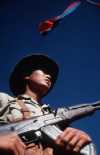 Fought over a period of 10 days in 1969, the Battle of Hamburger Hill was the last major US ground assault of the Vietnam War. Attacks on the heavily fortified hill were primarily carried out by infantry using small arms fire, with fighting akin to WWI trench warfare. The site was of little strategic value, and the high number of casualties that resulted from capturing it sparked controversy and led to dramatic changes in US strategy. How did the hill get its name? Discuss
Fought over a period of 10 days in 1969, the Battle of Hamburger Hill was the last major US ground assault of the Vietnam War. Attacks on the heavily fortified hill were primarily carried out by infantry using small arms fire, with fighting akin to WWI trench warfare. The site was of little strategic value, and the high number of casualties that resulted from capturing it sparked controversy and led to dramatic changes in US strategy. How did the hill get its name? Discuss
Source: The Free Dictionary
 On May 19, 1780, an unusual darkening of the day sky was observed over parts of New England and Canada. The darkness was so complete that candlelight was needed as early as noon in places. Researchers examining scar damage in tree growth rings believe that a large fire in Canada’s Algonquin Provincial Park contributed to the darkness, but thick fog and cloud cover likely also played a role. The episode was, and still is, interpreted by many as what kind of event?
On May 19, 1780, an unusual darkening of the day sky was observed over parts of New England and Canada. The darkness was so complete that candlelight was needed as early as noon in places. Researchers examining scar damage in tree growth rings believe that a large fire in Canada’s Algonquin Provincial Park contributed to the darkness, but thick fog and cloud cover likely also played a role. The episode was, and still is, interpreted by many as what kind of event? 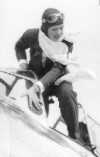 A pioneering American aviator, Cochran was the first woman to break the sound barrier and, in 1961, to fly at twice that speed. She was also the first woman to fly in the Bendix transcontinental race, which she won in 1938, a few years after her initial attempt. During WWII, she trained female transport pilots in the British and US Air Force auxiliaries and became the first woman to pilot a bomber across the Atlantic. A successful entrepreneur, Cochran learned to fly to promote her line of what?
A pioneering American aviator, Cochran was the first woman to break the sound barrier and, in 1961, to fly at twice that speed. She was also the first woman to fly in the Bendix transcontinental race, which she won in 1938, a few years after her initial attempt. During WWII, she trained female transport pilots in the British and US Air Force auxiliaries and became the first woman to pilot a bomber across the Atlantic. A successful entrepreneur, Cochran learned to fly to promote her line of what? 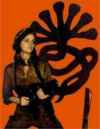 The Symbionese Liberation Army (SLA) was an American terrorist group responsible for various bank robberies, murders, and acts of violence between 1973 and 1975. The group is perhaps best known for kidnapping 19-year-old media heiress Patty Hearst, who later became a member of the SLA—a decision experts attribute to a psychological condition known as Stockholm syndrome—and participated in their heists. What happened to Hearst after police raided SLA headquarters in 1974, killing several members?
The Symbionese Liberation Army (SLA) was an American terrorist group responsible for various bank robberies, murders, and acts of violence between 1973 and 1975. The group is perhaps best known for kidnapping 19-year-old media heiress Patty Hearst, who later became a member of the SLA—a decision experts attribute to a psychological condition known as Stockholm syndrome—and participated in their heists. What happened to Hearst after police raided SLA headquarters in 1974, killing several members? 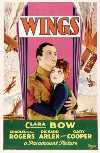 The Academy of Motion Picture Arts and Sciences was formed in 1927 by Louis B. Mayer and others to raise the standards of film production, and its first Academy Awards were presented not long after. Hosted by actor Douglas Fairbanks and director William C. DeMille, the first Academy Awards ceremony recognized individuals who had made outstanding film achievements in 1927 and 1928. The gold-plated statuettes given to awardees are popularly known as “Oscars.” How did they get this nickname?
The Academy of Motion Picture Arts and Sciences was formed in 1927 by Louis B. Mayer and others to raise the standards of film production, and its first Academy Awards were presented not long after. Hosted by actor Douglas Fairbanks and director William C. DeMille, the first Academy Awards ceremony recognized individuals who had made outstanding film achievements in 1927 and 1928. The gold-plated statuettes given to awardees are popularly known as “Oscars.” How did they get this nickname?  Inspired by the eagles he saw while out in the fields, Spanish inventor and aviation pioneer Diego Marín Aguilera built a flying machine from wood, iron, cloth, and feathers whose design was based on his observations of birds of prey. His attempt to fly the vehicle was somewhat successful—he reportedly reached a height of about 20 ft (6 m) and glided some distance—but he crash-landed when the device suffered a structural failure. What did the locals do when they learned of his invention?
Inspired by the eagles he saw while out in the fields, Spanish inventor and aviation pioneer Diego Marín Aguilera built a flying machine from wood, iron, cloth, and feathers whose design was based on his observations of birds of prey. His attempt to fly the vehicle was somewhat successful—he reportedly reached a height of about 20 ft (6 m) and glided some distance—but he crash-landed when the device suffered a structural failure. What did the locals do when they learned of his invention? 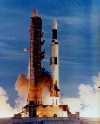 Launched into orbit in 1973, Skylab was the first US space station. It carried a laboratory for studying the human body’s adaptation to weightlessness and a powerful solar telescope. Three successive astronaut crews conducted research aboard Skylab for a total of 171 days in 1973–74. Though Skylab was intended to be reused, increased solar activity caused its orbit to degrade faster than expected. In 1979, the 75-tonne station reentered Earth’s atmosphere and broke up. Where did the debris land?
Launched into orbit in 1973, Skylab was the first US space station. It carried a laboratory for studying the human body’s adaptation to weightlessness and a powerful solar telescope. Three successive astronaut crews conducted research aboard Skylab for a total of 171 days in 1973–74. Though Skylab was intended to be reused, increased solar activity caused its orbit to degrade faster than expected. In 1979, the 75-tonne station reentered Earth’s atmosphere and broke up. Where did the debris land? 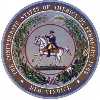 More than a month after Confederate General Robert E. Lee surrendered to Union General Ulysses S. Grant at Appomattox Court House, ending the American Civil War, fighting continued in other regions. The Battle of Palmito Ranch was fought in Texas on May 12-13, 1865, and was the last major clash of arms in the war. It ended with a Confederate victory, with 118 Union soldiers killed and a few dozen rebels wounded. Who was the last casualty of the battle—and likely the last of the war?
More than a month after Confederate General Robert E. Lee surrendered to Union General Ulysses S. Grant at Appomattox Court House, ending the American Civil War, fighting continued in other regions. The Battle of Palmito Ranch was fought in Texas on May 12-13, 1865, and was the last major clash of arms in the war. It ended with a Confederate victory, with 118 Union soldiers killed and a few dozen rebels wounded. Who was the last casualty of the battle—and likely the last of the war?  One of the first major crises of the Cold War, the Berlin blockade began in June 1948 during the multinational occupation of post-WWII Germany. In an attempt to force its former wartime allies—the US, the UK, and France—out of Berlin, the USSR began a blockade of all rail, road, and water traffic through East Germany to West Berlin. Rather than withdraw, the Western powers bypassed the blockade by airlifting thousands of tons of supplies into the city each day. What was Operation Little Vittles?
One of the first major crises of the Cold War, the Berlin blockade began in June 1948 during the multinational occupation of post-WWII Germany. In an attempt to force its former wartime allies—the US, the UK, and France—out of Berlin, the USSR began a blockade of all rail, road, and water traffic through East Germany to West Berlin. Rather than withdraw, the Western powers bypassed the blockade by airlifting thousands of tons of supplies into the city each day. What was Operation Little Vittles?  In the 1930s, severe drought conditions in the Great Plains region of the US and decades of farming without crop rotation led to a series of devastating dust storms. The storms, called “dusters” or “black blizzards,” caused widespread ecological and agricultural damage. In May 1934, one of the worst storms to hit the Dust Bowl blew massive amounts of Great Plains topsoil all the way to the East Coast and dumped the equivalent of how many pounds of debris on Chicago, Illinois?
In the 1930s, severe drought conditions in the Great Plains region of the US and decades of farming without crop rotation led to a series of devastating dust storms. The storms, called “dusters” or “black blizzards,” caused widespread ecological and agricultural damage. In May 1934, one of the worst storms to hit the Dust Bowl blew massive amounts of Great Plains topsoil all the way to the East Coast and dumped the equivalent of how many pounds of debris on Chicago, Illinois?